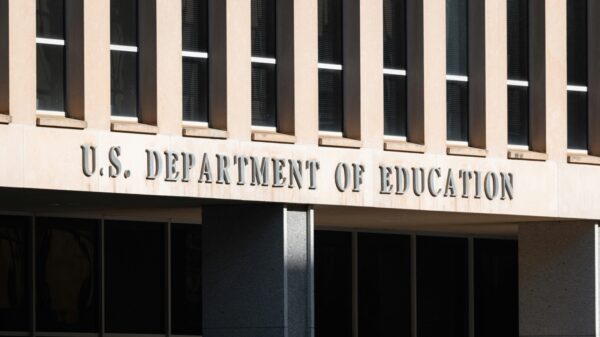
As one of the wealthiest countries in the world, the United States assumes a pivotal role as a provider of international assistance. America is the largest foreign aid donor in the world, making up nearly 23 percent of total official development assistance from major donor governments in 2019, according to the Congressional Research Service.
The history of the United States foreign assistance goes back to post-World War War II when the USA emerged as a global power, the Congressional Research Service says. President John F. Kennedy signed the Foreign Assistance Act on Nov. 3, 1961, which established the United States Agency for International Development (USAID). USAID’s creation consolidated various foreign assistance programs under a single agency, streamlining efforts to address global challenges such as hunger, disease and socio-economic disparities.
The Marshall Plan is one of the most notable outcomes of USAID. The plan was implemented over four years from 1948 to 1952, with its main objective being the recovery and reconstruction of Western Europe post World War 2. According to the paper, there are three main objectives of the U.S.’s foreign assistance programs: national security, commercial interests and humanitarian concerns.
While the United States of America has spent billions of taxpayer dollars on foreign assistance, the impact of the assistance has also been significant. Under the US President’s Malaria Initiative, there has been a 29 percent reduction in malaria mortality rates among children under five between 2010 and 2019, helping save millions of lives. USAID also showed support to Nepal after the 2015 earthquake helping with providing over 1000 learning centers to earthquake-affected areas.
While the U.S.’s foreign assistance has played a crucial role in supporting nations worldwide and advancing American interests, the question we ask is: Do all decisions regarding foreign aid resonate with the American people and yield positive global outcomes?
A major concern has always been about how taxpayer money could be funding military aid in wars while it could be put to much better use to mobilize infrastructure and resources inside the country.
The United States of America has been one of the leading providers of military aid to Ukraine since the Russia-Ukraine war, this has helped heavily with the situation in Ukraine. However, there has been a constant debate across Congress and among the American public about how the US taxpayer money should be spent. According to CNN, 55 percent of the American public says the U.S. Congress should not authorize additional funding to support Ukraine.
While the opinion is constantly wavering, foreign assistance has yielded positive outcomes in Ukraine. The same cannot be said about some instances with the USA’s foreign aid, recently many reports have come out talking about the inefficiency of USAID.
USAID uses various secondary organizations to implement its projects. Still, according to a report by the Wilson Center, only 3 percent of USAID’s projects actually met its highest standard of quality, while most of the reports on other projects were simply lacking when it came to data collection and sample sizes.
The report points out several issues in not only the policies within USAID but also the loopholes and inconsistencies in the way their projects are set up and later analyzed. Similarly, according to USAID, their grants also constantly overlook smaller organizations and the barriers to entry are especially tough on them as most grants go to legacy government organizations that have pre-existing relationships with USAID.
There is a lack of transparency in the processes of the USAID that makes us question their efficiency in the long run.
Citing such concerns, we are also witnessing significant shifts in USAID and their screening and reporting processes for their projects and success. USAID also mentioned being more inclusive in their recruiting process, mentioning their history of recruitment from Georgetown University while constantly overlooking Howard University. They are also opening up a new website WorkWithUsaid.org, to make the process of working with USAID easier for smaller organizations and NGOs.
Decades of aid and grants have also proved ineffective in the case of Afghanistan. An article by the Cato Institute called Afghanistan; “A Poster Child for Foreign-Aid Failure”, accounting for the lack of positive outcomes of the 76 billion dollars worth of Official Development Assistance that was poured into Afghanistan from 2001 to 2019.
Referring to the current situation in several parts of the world be it Gaza, Afghanistan or the Congo, There is an urgent call to action for several organizations such as the United Nations. While the United States is trying to de-escalate the situation in Congo along with providing $48 million in humanitarian aid, the same cannot be said for the situation in Gaza.
The Congo is known to have major natural resources cobalt, copper, gold and petroleum which has made it such a vulnerable target for its neighboring countries, Rwanda and Sudan, while also gathering support and active contribution from the United States of America. On the other hand, Israel is a major ally of the United States of America, involved jointly in developing military technology and weapons. It’s clear to see that USAID might be influenced by such political ties when it comes to their contribution to the international arena.
The United States House of Representatives just passed a $14.5 billion military aid package for Israel, further supporting the attack on Gaza while more than 1000 United States Agency for International Development employees have called for a ceasefire in Gaza, according to Aljazeera. In what seems like a paradox, the U.S. also vetoed the UN Security Council Resolution to a ceasefire in Gaza, citing Israel’s right to self-defense. This decision has divided the American public as hundreds of thousands of Americans marched in protest for a ceasefire in Washington D.C. on Nov. 4.
As the United States of America continues to navigate its role as a major provider of international assistance, there is a growing need for transparency, accountability, and a reevaluation of aid strategies within USAID as well.
The recent protests and public sentiments highlight the importance of aligning foreign aid decisions with the values and expectations of the American people, ensuring that assistance programs lead to positive and meaningful global outcomes without disrupting the U.S.’s national security. It has become evident that the impact of U.S. foreign aid decisions extends beyond boardrooms and battlefields to the daily lives of the less fortunate and those suffering.
Copy edited by Jasper Smith











